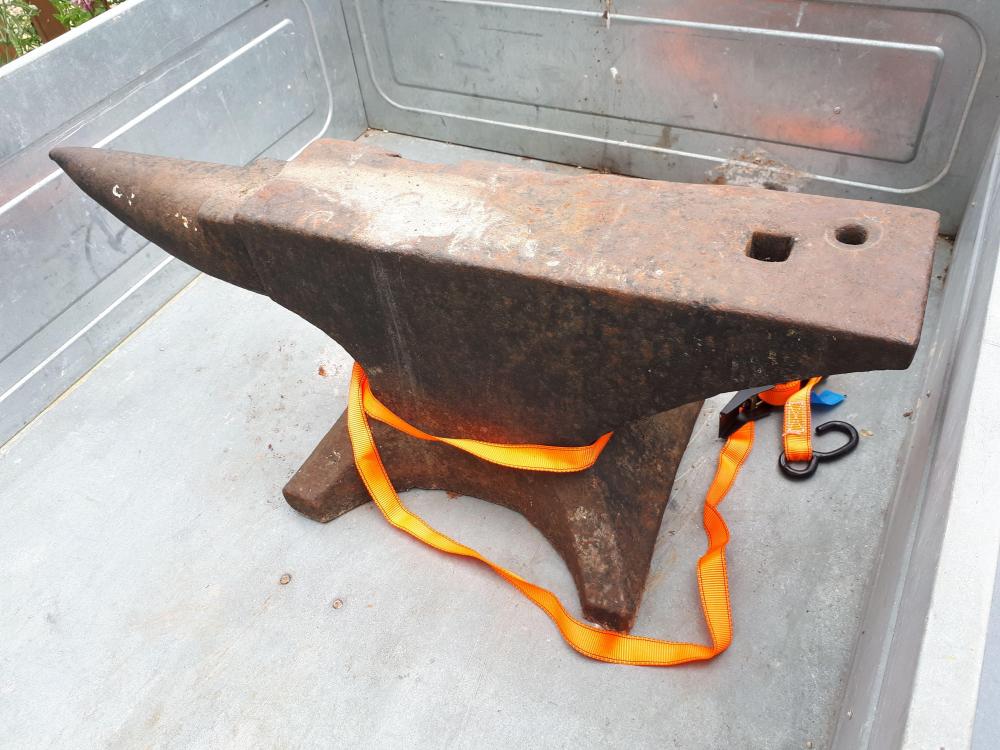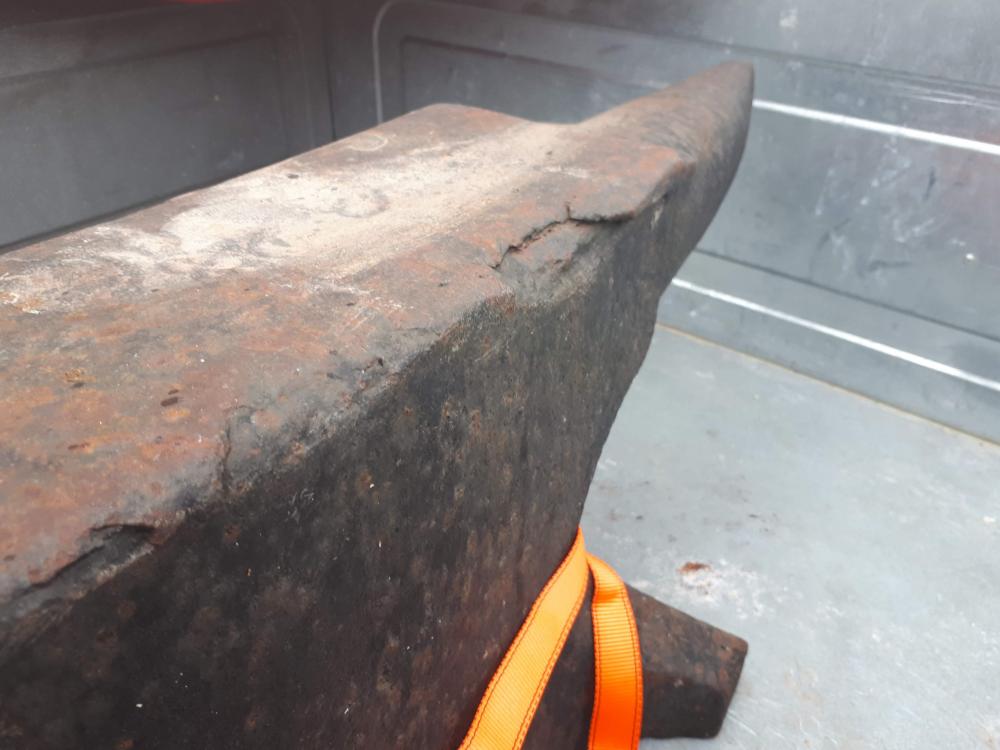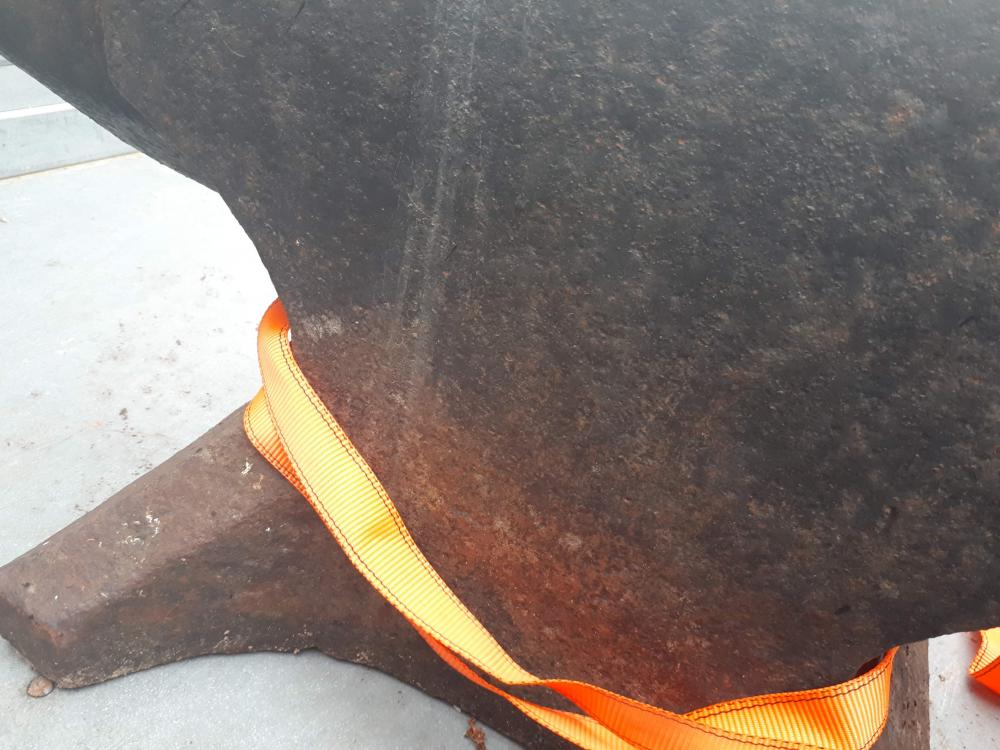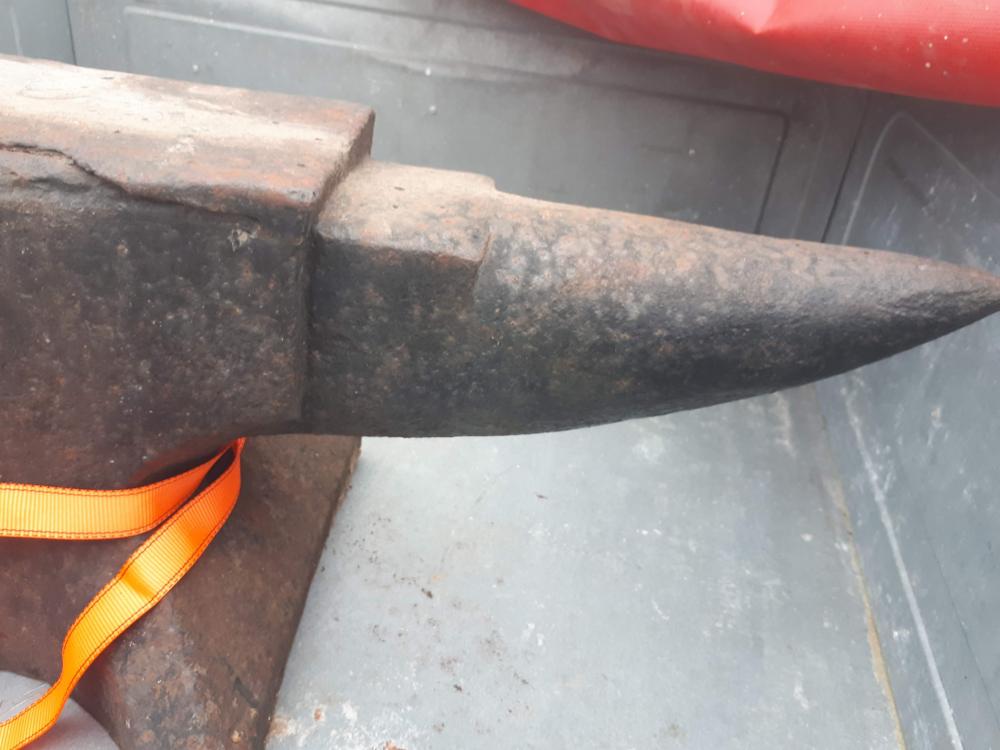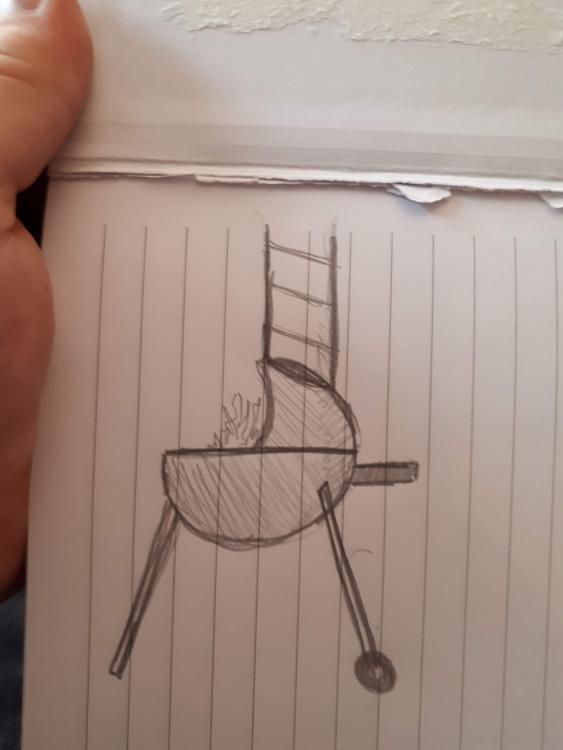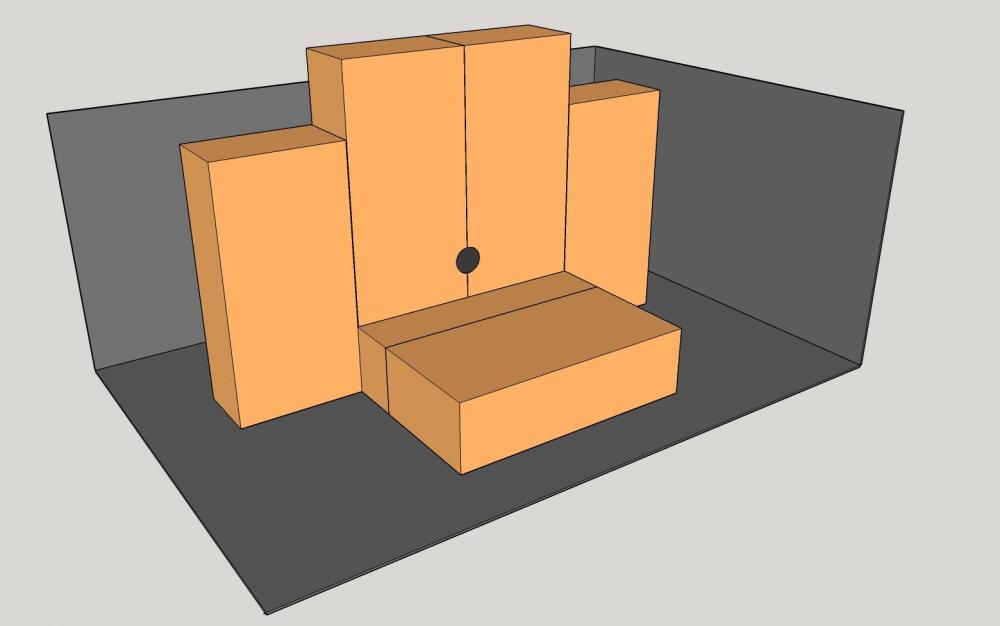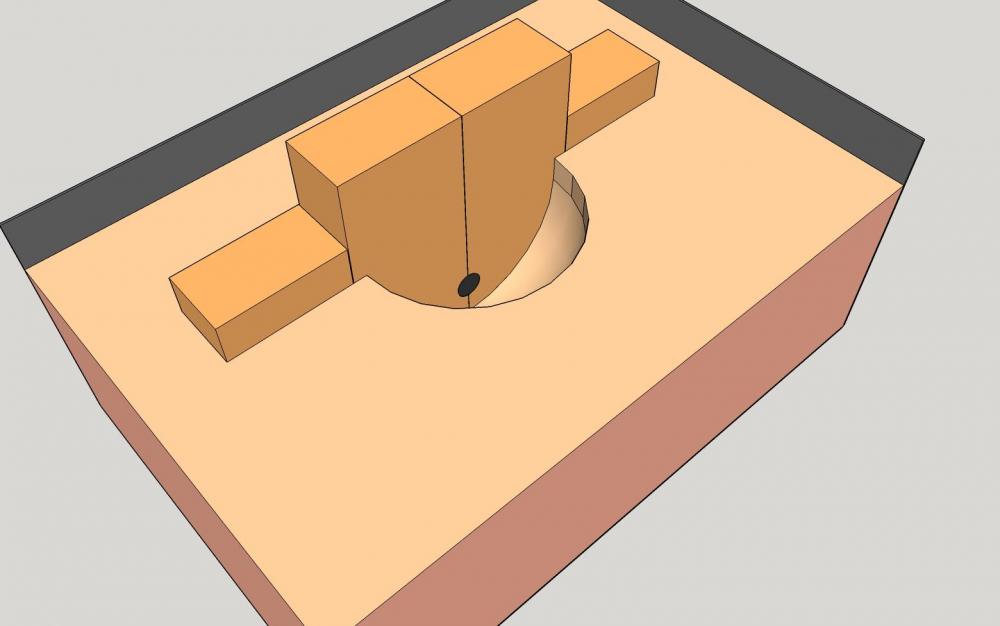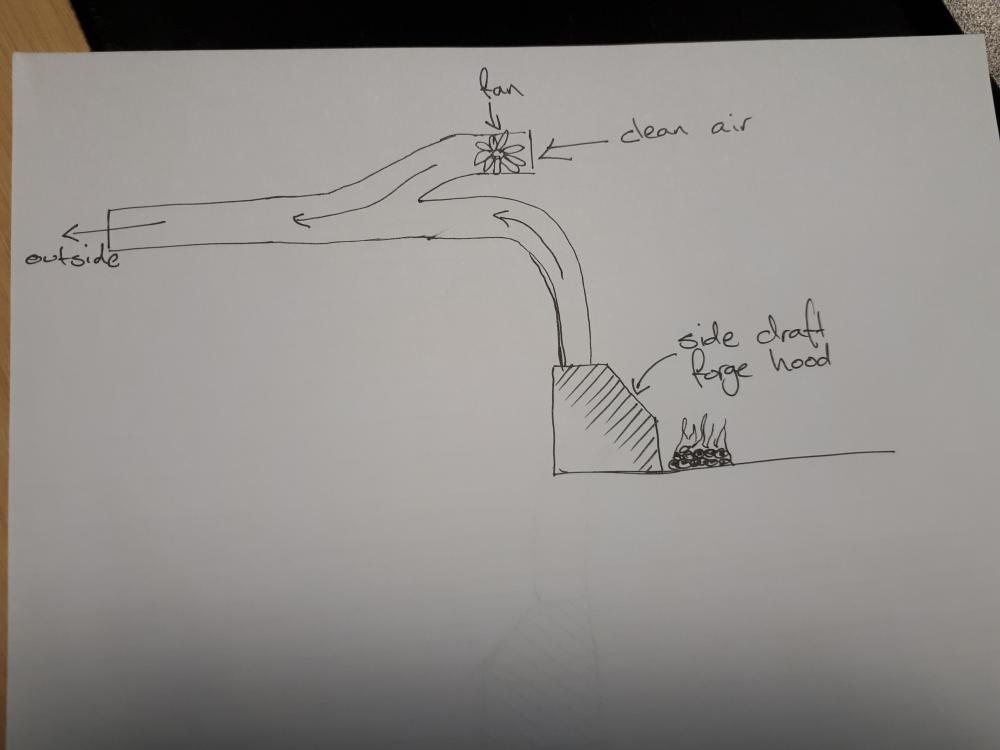-
Posts
45 -
Joined
-
Last visited
Content Type
Profiles
Forums
Articles
Gallery
Downloads
Events
Everything posted by Drunken Dwarf
-
I absolutely don't wish to rush and damage my new baby. This Saturday I will take what I consider to be the lightest approach (a bit of surface/oven cleaner and a hand brush) and try it on the underside of the feet in a small area to have a look at the result. Then work up from there I do understand the 'petina' which will not build up again in my lifetime, however in my mind, petina is an aging effect on metal, seeing as this appears to be painted I'd say that ship has already sailed.
-
Just to get a look at the stamping on the side I was thinking of this oven cleaner technique Here which was linked to in this IFI post about cleaning an anvil Post My reasoning behind this is that I could do it more carefully with a wire brush by hand, rather than a knotted wire wheel on an angle grinder. Any opinions on this?
-
Hi everyone. After quite a while of checking gumtree every day and raising some funds via the sale of an old guitar, I am thrilled with my new anvil. It cost me £250 and was being used as a flowerbed decoration and although there's some damage to one edge, it's not something I'm particularly worried about. I THINK it's been painted, it looks unusually black, there's a faint indentation for some markings but I can't make them out at all, definitely doesn't show on picture. It's 87cm long, 31cm tall and 14.5cm wide across the face. (34.25" x 12.2" x 5.7") and took 2 of us to lift it into my trailer (was difficult) ... My wife is a nurse and says she has at work some scales for ..... ahem ... larger patients, hopefully I can get a weight on it. Should I clean it up? By cleaning I mean stripping the paint and rust off, and if so, how? I was thinking a wire cup wheel on a grinder, or soak in paint remover for an hour or so before washing off. I've seen oven cleaner clean up a painted/rusty vice well (I think on this forum). I see people painting their anvils and always thought that would make them less effective, at least on the face/horn? Also, I love the lustre of bare metal anvils, maybe with a bit of oil to preserve them, but I really don't want to wreck it. Any thoughts would be appreciated, and especially curious as to whether I got a good deal or not on it.
-
Hi all. I've gone through many plans of my JABOD forge, (In the amount of time I've spent thinking about it I could've built it 5 times). My main issue is that I wanted a steel box rather than wood, and cannot weld. I've just come into an old kettle barbecue which I'm going to line with fire clay and make into a side-blast JABOD forge (for charcoal). My plan is to use the lid of the barbecue as a hood (cut in halfish) with a 10" chimney pipe as crudely shown in the sketch attached. My questions are: Will the BBQ lid work as a forge hood? One thing I don't really understand is smoke shelves and what their purpose is (I've read through a lot in these forums). Also whether I'll have to block off some of the opening to make it smaller or whether the lid cut in half with a bit of an overhang over the firepot will work without making the opening smaller. (The BBQ bowl diameter is about 22", 7" deep and lid about 7" high) For the spiral tube, stainless steel is very expensive, while galvanized mild steel is really quite cheap. Is there any easy way to make the galvanized suitable for this as its right over the fire and will burn? I realize airflow should take all the internal gasses outside, but the exterior of the pipe I imagine would still give off fumes. I wish to take NO risks with galvanization if possible, it scares me a little.
-
I've been googling and all I can find is 'cowl', please, enlighten us who can't remember what it used to be called
-

Clay firepot question for side blast
Drunken Dwarf replied to Drunken Dwarf's topic in Solid Fuel Forges
What sort of mix did you use for the fireclay? I've been reading https://www.iforgeiron.com/topic/21170-mixing-fire-clay/ and a couple of posts mention a 2-3 to 1 mix with sand, not entirely sure if that's 2-3 parts clay to 1 part sand or the other way around. -
Hi all I'm making a side blast forge, sort of a JABOD forge based on a variation of the designs in the JABOD threads and the Viking layout in Charles R. Stevens wonderful post about traditional forge designs (8" semi circle fire pot, 5" deep with a "bellows stone" ). I have a noob question about materials, Im not trying to make anything that will last a lifetime, but a couple of years use out of it would be nice. I don't have large quantities of clay land which a lot on the JABOD threads seem to, so I'm thinking of using eBay fire clay (remove commercial link), cut with sand with Victas fire bricks (remove commercial link) directly under the fire pot and as the bellows stone (attached mock-up of layout). 1. Could anyone advise whether these materials are suitable and if so, what sort of clay/sand/water mix should I be using? 2. Also, the fire bricks state that they are rated to 1300 degrees (C), which should be below forging temps this states 1260 as max mild steel forging temps. I've been reading in the JABOD threads about heat getting through and igniting the wooden frame behind, so not only am I using a steel pan, I've got >100mm of fire clay behind the bricks before the edge of the pan.
-

When to start signing your work
Drunken Dwarf replied to Drunken Dwarf's topic in Blacksmithing, General Discussion
Is there a difference in the quality of the outcome between carving directly into the punch or carving into a master and then driving the punch into it? I get the impression that the latter wouldn't be as crisp, but certainly seems easier to do with a Dremel or something. Also, using that method, should the master be tool steel? And hardened? -

Advice on cheap hand cranked bellows
Drunken Dwarf replied to Drunken Dwarf's topic in Bellows, Blowers
Now that's an idea. I like the traditional angle. I don't suppose you have any pictures of it? I think I remember seeing plans for a bellows somewhere on this forum. My forge is a 10' metal shed, I could always mount it on the roof and have a chain pull system. -
Hi all One of the limitations I have in setting up my forge is electricity. I need to run the whole thing on a 12v battery and it's indoors without the ability to run a high chimney, so that will already have to power smoke extraction and lighting. So I'm looking at hand cranked blowers to save a little power on the forge itself. And obviously, like everyone, money is tight, so I'm looking cheap. I've found these on Amazon https://www.amazon.co.uk/dp/B07K9HVTG4 and I'm assuming based on the price that they are not worth the effort of even clicking the button, but I thought I'd ask for advice as to whether they would be a workable option here.
-

When to start signing your work
Drunken Dwarf replied to Drunken Dwarf's topic in Blacksmithing, General Discussion
MC Hammer. You make a really good point. I've been thinking about touchmarks from my own perspective in a way to say "I made this" on something I'm proud of producing. I've not really thought of the other people down the line who may come across my work and enjoy having a bit of history to it. To be honest it's because I never intended to do this commercially in any way and have much less interest in selling anything than just making pieces for myself. But some day, long after my lifeless body has been burnt on a fitting longboat, some else is going to come into possession of 200 misshapen S-Hooks and they might want to know who swore at the steel until it bent. -

When to start signing your work
Drunken Dwarf replied to Drunken Dwarf's topic in Blacksmithing, General Discussion
I suppose even the things you first make, it's useful to stamp something on them to identify date etc, so you can track development. I've always been told to stamp tools with the type of steel you use in case you need to reharden etc. Maybe I should get just a set of letter stamps and start putting "DWARF 2019" on things until getting ready to actually design a "touchmark". -
I absolutely love the knocker. The twist is wonderfully placed and quite understated, with the peened backing bar it looks really nice.
-
This is something I've been pondering sort of abstractly, I'm not near ready to myself, but when during the learning of your craft do you invest time/money in a touchmark? It's I'm sure different for those of us that were properly trained through an apprenticeship or similar, but for the average hobbyist whose hammering away in a shed? It's obviously not worth the complete novice putting their mark on the 50 J hooks they learn to point and taper with, but at what point do you consider yourself to be "producing work" worth signing?
-

Coal forge in a shed, in a hanger.
Drunken Dwarf replied to Drunken Dwarf's topic in Chimneys, Hoods, and Stacks
Noone in HVAC now I think of it. That's a gap in my friendship circle! I have thought of propane tbh, and most of the reasons I want to keep to coal are irrational. Back before I had a space to forge I was planning a mobile forge in a trailer, which would have had to be propane by necessity. But as soon as I had a static place I'd rather a solid fuel one. I don't like the noise of the gas forges, the small openings make it difficult to work on anything with a big bend in it. I have an irrational fear of storing propane because I'm unfamiliar with it :p. Also all I could afford is like, a small devil forge from eBay. And I'm almost embarrassed to say it, but there's a romanticism to a traditional coal fire -

Coal forge in a shed, in a hanger.
Drunken Dwarf replied to Drunken Dwarf's topic in Chimneys, Hoods, and Stacks
ThomasPowers: Yeah, I have an old fan from my ford focus which I was planning to use as the forge blower. So doing something similar for the extraction would be ideal. My problem is that I don't have electricity where I am, so I'm going to be running the forge from a large agricultural 12V lead acid battery. I shall look at that sort of clean air pushing idea. Sort of like the image I've attached is what I have in my head, if you'll excuse the terrible drawing. mutant: Thanks, I've had a look at your channel and I'll have a go through more of the videos when I have the chance. (I see you've done an Alec Steele course, he's just moved to the states from his home in the same tiny city I live in ). I'm impressed you've got it that soundproofed, does the enclosure not restrict your working area a lot? Seems like it'd have the drawbacks of a gas forge in the small opening, and make maintaining the fire harder. -
Hi all. I'm at the moment kitting out a coal forge in a small space I was able to obtain. My forge is in a 10ft x 8ft metal shed, which is itself inside a storage unit. I have the door of the shed a few feet from the door of the unit (a normal house sized door) with both open so hopefully enough in-draft. My problem is the forge flue, I only rent a space in the unit, I can't put a flue through it and can't really extend anything above the roof line. My only real option is to have a flue coming out of my shed, through a flexible pipe which I put out the unit door. I understand that I won't be able to get a cross draft which is needed for a passive chimney, so I'll need some sort of mechanical extraction. My other limitation is that I'm trying to run the whole forge on 12V. I've seen 12V extractor fans on amazon, which im thinking "Put some sort of forge hood on, duct it out of my shed to a fan, duct that out the door.". I have no idea if this sort of setup would be sufficient and in all honestly, I don't like the sound of CO poisoning I realize my setup is not exactly ideal, but it's what I have to work with. Any advice would be amazing.
-

Deadening a smaller anvil
Drunken Dwarf replied to Drunken Dwarf's topic in Anvils, Swage Blocks, and Mandrels
Thanks for all the great advice, I'll definitely be calking up my stand when I've finished sanding it perfectly flat (the joys of getting a nice flat edge when all you have is a cheap jigsaw). -
Greetings all. I've been reading up on deadening anvils (for the sake of my neighbors) and aside from the standard chains and magnets, people seem to get the best results by adding something soft between anvil and stand. I've read positive things about a layer of cork or rubber underneath your anvil and an interesting youtube video showing a layer of builders silicone. My question is whether that's as effective with much smaller anvils. I am a complete beginner and have a small railroad track anvil. My concern is that the weight of the anvil helps to rebound force into the strikes, and while on a large proper anvil that weight comes from the steel itself, I imagine a firm fixing to a solid stand helps a lot with the solidness of a small, relatively lightweight "anvil" and I'm worried that putting a something soft between the anvil and stand (wooden sleepers in my case) will have a negative effect on the forging. Like I said, I'm a complete beginner, so any advice would be really appreciated.

